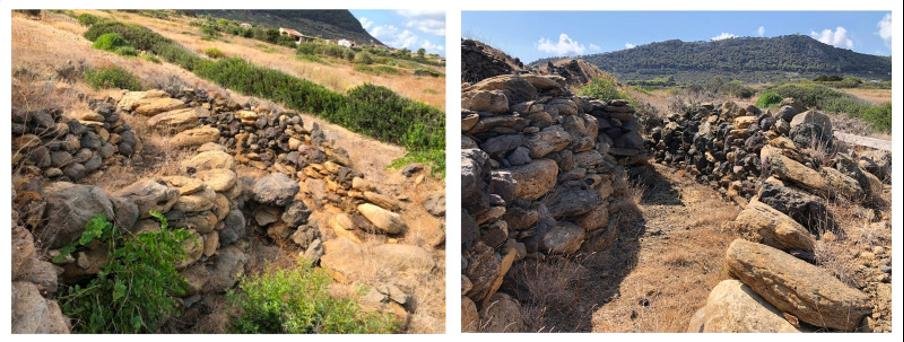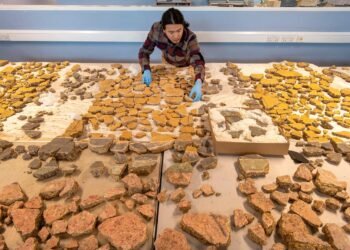Archaeologists have uncovered a sophisticated fortification system beneath the Bronze Age village of Villaggio dei Faraglioni on Ustica, a small island north of Sicily.

The discovery, detailed in a study published in the Journal of Applied Geophysics, offers valuable information about the defensive structures of this ancient settlement, known for its orderly urban plan and considered one of the best-preserved Mediterranean settlements of its time.
The settlement, thriving between 1400 and 1200 BCE, boasts an organized layout featuring huts and narrow roadways along the island’s northern edge. What sets this discovery apart is the identification of a hidden arc-shaped stone fortification system measuring an impressive 820 feet (250 meters) in length and standing 13 to 16 feet (4 to 5 meters) tall. This mighty wall, discovered using ground-penetrating radar and electrical resistivity tomography, acted as the settlement’s primary defensive barrier.
Vincenzo Sapia, an applied geophysicist with Italy’s National Institute of Geophysics and Volcanology (INGV), said: “Thanks to [the instruments], it was possible to locate accurately and in a totally non-invasive way the deep foundations of the [structure] as long as the wall, which performed the functions of the first defensive barrier.”

The research, a collaborative effort involving the INGV, the Archaeological Park of Himera, Solunto, and Iato, the University of Studies Suor Orsola Benincasa in Naples, the Villaggio Letterario Association of Ustica, the Laboratory Museum of Earth Sciences of Ustica (LABMUST), the University of Studies of Siena, the Department of Mathematics and Geosciences of the University of Trieste, and the Ministry of Culture, brought together experts in various fields. Their multidisciplinary approach aimed to study semi-buried structures outside the defensive wall without invasive excavation.
Domenico Targia, director of the Archaeological Park of Himera, Solunto, and Iato, highlighted the village’s significance, describing it as “one of the best-preserved Mediterranean settlements of its time.” The village’s coastal stretch featured dozens of huts, narrow streets, and the imposing 250-meter-long, 4 to 5 meters high defensive wall encircling the settlement to safeguard against attacks and raids.
The recent findings reveal the advanced defensive architecture of the Bronze Age. The external wall, detected through geophysical investigations, complements the still-standing fortified wall on the inland edge of the village. The internal wall, with an arched fish hook-like curve, connected directly to the huts. The newly discovered external wall, positioned approximately 6 meters from the inner wall, showcases an articulated and sophisticated defensive system.

Franco Foresta Martin, director of the Laboratory Museum of Earth Sciences of Ustica, said: “Our discovery opens a new window on understanding this ancient village, suggesting a defensive complexity beyond expectations.” Geophysical technology played a crucial role, allowing researchers to unveil hidden layers of history without invasive excavation.
The research campaign not only emphasized the defensive function of the discovered structures but also highlighted their role in delineating the village’s borders and contributing to its social structure. The defensive system served as both protection and a marker, enriching our understanding of Bronze Age defensive architecture and societal organization in the Mediterranean.

Sandro de Vita, an INGV researcher, underscored the study’s multidisciplinary nature, demonstrating the effectiveness of non-invasive methods in guiding further direct investigations. The application of geophysical prospecting techniques, including electrical resistivity tomography and ground-penetrating radar, proved highly satisfactory, offering precise information about the buried structures without the need for costly and time-consuming excavation operations.

























I can never remember how to realize the calculation of “BCE”. Is it beyond BC or after AD?
To obtain complete information on this matter, please watch the video titled “BC vs AD, BCE vs CE; What’s the difference?” on our YouTube channel.
The address of our YouTube channel is: https://www.youtube.com/@archaeologymag